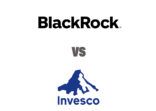Though their investment in the region is typically in the single digit percentage, several Europe-based fund selectors told Fund Selector Asia that the region is becoming attractive again.
“We’ve been quite bearish on Asia for 18 months, but we added a couple percent in the last few weeks,” said James de Bunsen, a multi-asset portfolio manager at Henderson Global Investments in London (pictured).
Worries over shadow banking and a property market bubble in China have been overplayed, added Tom Becket, chief investment officer of Psigma Investment Management in London.
“China’s Lehman moment, which everyone is predicting, is perhaps not going to take place,” he said. “We’ve taken a much more aggressive approach and added cyclical exposure.”
The sentiment aligns with a June report that revealed 35% of European fund managers surveyed wanted to increase exposure to the region, up from 30% at the beginning of 2014. At the same time, those who wanted to decrease exposure to Asia fell to 10% from about 18% in January, according to research from Expert Investor Europe.
Adjust and readjust
Uncertainty over China’s GDP growth trajectory caused pan-Nordic firm Danske Capital Group to trim exposure to emerging markets in the fall of 2013, said Allan Møller, head of fund selection.
“It turned out that our growth expectation was in line with what we expected and we slightly increased exposure again in early 2014.
However, that increase has been again reduced to a current neutral weight due to geopolitical events, specifically the mutual economic sanctions between Russia and the West and the threat of a Russian invasion of Ukraine. Danske was therefore concerned about exposure to all risky assets, including emerging markets, Møller said.
Danske is invested in Asia via several funds including Fidelity Asian Special Situations, Carnegie AM Asia, Aberdeen Global Asia Pacific Equity and Schroder Greater China Fund.
However, in Danske’s model portfolio, Asia exposure is typically through global emerging market funds.
With the latest reduction in risky assets, Asia exposure as a percentage of global emerging markets is 12-15% instead of 15-20%, he said.
Nonetheless, Møller remains optimistic. “I believe we will increase the weighting of global emerging markets later this year if the growth in China is sustainable.”
Warming trend
UK-based Coutts & Co, which philosophically puts passive funds first and heavily scrutinizes investments in active funds, is invested in Aberdeen Asia Pacific Equity, the Newton Asia Income Fund, and “a widespread list of ETFs,” said Alan Higgins, chief investment officer at Coutts in London.
“What has become a bit more interesting is Asian fixed income,” Higgins added. “It’s become more liquid, more established and the market is bigger. We haven’t allocated yet but that’s a space where we could increase.”
More bullish is Tom Becket, chief investment officer of Psigma Investment Management in London. Psigma is currently overweight in China, Hong Kong and Korea. Over the last 12 months, the firm increased its Asian weighting to 7.5% from 5%.
Becket believes a rotation of cash from other emerging markets and developed markets into China and Hong Kong is occurring.
Psigma sold its position in First State Asia Pacific Leaders to invest, in January this year, in the Blackrock Asian Growth Leaders Fund, managed by Andrew Swan.
“We sold out [of First State] because that fund was too defensive, too focused on consumer staples and high quality businesses which were relatively expensive as opposed to more cyclical recovery stocks, which is where Blackrock began to allocate. We also liked the dynamic flexible mandate that Andrew Swan has for that particular product.”
Psigma is also invested in the Allianz Greater China Fund run by Christina Chung.
The fund exploits some of China’s intermediate growth themes that have fallen out of favor: technology, energy replacement, consumer services and financial services, he said.
“All are longterm growth plays everyone loved last decade but don’t believe in this decade, which is incredibly short sighted. This is a once in a decade opportunity to invest in China growth themes at attractive valuations.”
“We tend to invest in things quite early. We were heavy in Japan in 2011 and aggressively allocated to China in 2013. That was a pretty contrarian position but it’s getting less so now.”
Psigma has also been invested in Schroder Asian Income. It was bought as a defensive play three years ago, but since then the fund manager, Richard Sennitt, has taken a more cyclical bias.
Psigma intends to add a fourth Asia fund and has narrowed down the choice to Neuberger Berman Greater China Equity Fund [FUI6] run by Frank Yao and Lihui Tang and Fidelity China Fund, managed by Jing Ning, who moved to Fidelity last year from Andrew Swan’s team at Blackrock.
“We’re looking to add another dedicated China product to play this medium term valuation opportunity that we currently see in Chinese equities,” Becket said.
Asia via emerging markets
Henderson Global is seeking a replacement for the one emerging markets fund it’s invested in, the First State Emerging Markets Fund, which has closed, De Bunsen said. The firm has singled out a few candidates.
One is Blackrock’s BGF Asia Dragon Fund, run by Andrew Swan, which is tied to Asia growth. Another is Hermes Asia ex-Japan, run by Jonathan Pines. But the latter fund “has done incredibly well — too well for us to look at it now,” De Bunsen said.
In addition, the small cap strategy of Matthews Asia Small Companies Fund from Matthews Asia is attractive, he said.
Henderson is also invested in the Schroder Asia Total Return Fund, which he said is slightly different to the average Asian equity fund because it has a hedge overlay.
“They have lots of analysts on the ground and a quantitative macro overlay. If the top down view doesn’t look great, they might buy the stocks but try to hedge the country risk. It gives you low volatility exposure to Asia. It’s a bit like a hedge fund but we don’t pay hedge fund fees.”
De Bunsen said most UK-based firms have Asia exposure through First State or Aberdeen emerging market funds as a default solution.
“They did well in 2008, which is always a big tick in everyone’s box. They tend to have a smooth trajectory and people want that kind of steady earnings profile. Others are trying to copy their strategies.”
















